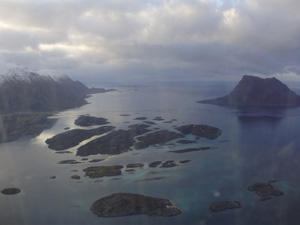
Mining companies in the prospecting stage source out
airborne geophysical companies that specialize in conducting highly precise
surveys and employ reliable data acquisition services, as well as precise
interpretation capabilities. The success of a geophysical survey is dependent
not only upon the survey itself, but the ability to interpret the data obtained
accurately and apply it appropriately.
Mining companies conduct geophysical surveys to source out
high concentrations of minable magnetic ores within the Earth's crust. These
surveys can indicate the locations of commodities such as kimberlites, magnetic
iron ores, petroleum, hydrocarbon, coal, and precious and base metals.
Services provided by an airborne geographical company
include gathering and interpreting highly regarded data, applying methods that
are cost-effective and highly optimal. Airborne geographical surveys secure
geophysical data and test the ambient magnetic fields of areas that are
widespread. A typical survey will provide a broad overview of a specific area's
geology. In addition, it is possible to test and accurately measure the
fluctuating magnetic signatures found in the Earth's crust.
Airborne surveys employ the use of aircrafts that undergo
months of modifications that ensure the aircraft is "magnetically quiet” in
order to conduct a reliable survey. Examples of these modifications include:
There are four key types sensors used in airborne
geophysical surveys:
The above four sensors are unique in the information they
gather. Magnetic data is generally acquired at a higher altitude and higher
speed. Radiometric data is acquired at a low altitude and speed. Information on
gravity is acquired at a rate of 60 meters per second.
In addition, a geophysical company should be able to field
on-site geophysicists who review the flight data on a daily basis for emissions
and quality control. Accuracy in data acquisition is of upmost importance as
the results of a geophysical survey are often the facts utilized when mining
companies decide to commence a mineral exploration. If the data is misleading,
it can lead to wasted time and money on exploring in areas that are not
profitable.
Most geophysical surveying companies are capable of
conducting both ground and airborne surveys and will have appropriate equipment
that will supply the most precise results for both types.
The most common airborne surveys conducted are airborne
magnetic surveys. These surveys employ the use of a magnetometer that is either
attached to an aircraft or towed behind. It works by testing the variations in
ambient magnetic fields. In turn, it offers indication as to the location of
minable magnetic ores in the terrain below.
Using an aircraft that has a fixed wing horizontal
gradiometer, it is possible to conduct detailed surveys at low altitudes,
acquiring highly accurate and precise data. These surveys have been known to
pinpoint the exact locations of commodities such as kimberlites.
A specialized aircraft combined with an accurate data
acquisition system increases the chances that the survey will be a successful
one, potentially rendering valuable information that will lead to a profitable
mineral exploration.
When sourcing out the geophysical services of a specific
geophysical company, check the state of the data acquisition systems that will
be used. It is good to look for the following characteristics:
-
Flight path planning
-
Real time graphic display
-
Multiple channels of analog recording
-
Multiple magnetometer inputs
-
Adaptive signal processing techniques
-
Immediate quality control
-
No need for post-flight corrections
Geophysical companies are able to apply their equipment to
both regional and detailed aeromagnetic surveys, and are capable of interpreting
the data in a readable and accurate manner. Regional surveys are used mainly in
mapping surveys and detailed surveys are capable of acquiring data at a higher
resolution. These surveys are conducted at a traverse line spacing of less than
500 meters and are able to detect concentrations of sought-after commodities in
the Earth's crust.